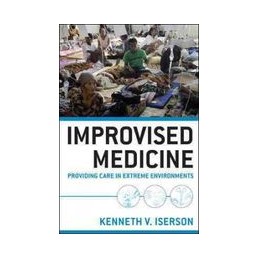- Obniżka


 Dostawa
Dostawa
Wybierz Paczkomat Inpost, Orlen Paczkę, DHL, DPD, Pocztę, email (dla ebooków). Kliknij po więcej
 Płatność
Płatność
Zapłać szybkim przelewem, kartą płatniczą lub za pobraniem. Kliknij po więcej szczegółów
 Zwroty
Zwroty
Jeżeli jesteś konsumentem możesz zwrócić towar w ciągu 14 dni*. Kliknij po więcej szczegółów
Publishers Note:: Products purchased from Third Party sellers are not guaranteed by the publisher for quality, authenticity, or access to any online entitlements included with the product.
Deliver quality healthcare in the most challenging field conditions
Dr Iserson has given us a most remarkable book. Many readers may be familiar with David Werners lay healthworker book, Where There Is No Doctor; this new volume could be titled Where There Is a Doctor–But No Stuff. Drawing from his experience providing care in international, wilderness, and disaster settings, he has compiled an impressive collection of bare-bones equipment and work-around strategies to provide the best possible care in resource-poor settings. While presenting many creative examples, the purpose of the book is not to offer an exhaustive list of solutions to missing resource challenges but to inspire creativity in readers who may find themselves needing to improvise. -- Family Medicine
Full of practical clinical pearls and proven strategies, this indispensible guide shows you how to operate outside your comfort zone and devise effective treatment solutions when the traditional tools (medications, equipment, and staff) are unavailable—or when you need to provide care outside of your specialty. Improvised Medicine is a must for anyone who plans to work in global, disaster, or other resource-poor settings.
FEATURES::
LEARN HOW TO::
Opis
